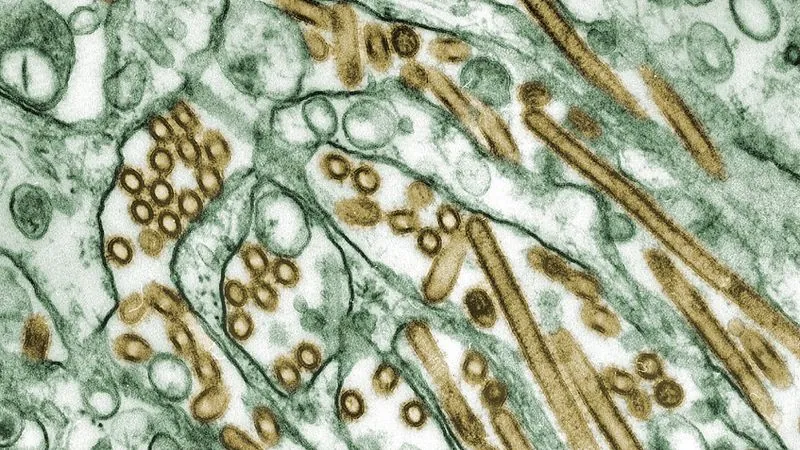
California's Bird Flu Crisis Deepens: Record High Infections and Human Cases Raise Alarms
2024-10-08
Author: Yan
California's Bird Flu Crisis Deepens: Record High Infections and Human Cases Raise Alarms
California is facing a serious outbreak of bird flu as a third farmworker has tested positive for the H5N1 strain, marking a potential escalation in what has been an alarming situation since the virus was first detected in cows earlier this year. If confirmed by the CDC, this will bring the total number of human cases to 17 in the U.S. since mid-March, underscoring the growing concern among health officials.
Farmers and veterinarians across the state report that the severity of the outbreak in California is unprecedented compared to other states, with a significant proportion of dairy herds experiencing severe illness and fatalities. This leads to fears of considerable impacts, not just on the agricultural sector, but also on public health.
All three reported human cases are related to farmworkers who had close contact with infected cattle. These workers experienced mild symptoms, including conjunctivitis, allowing experts to assess that there is currently no threat of severe illness in infected humans. However, officials are warning that these cases point to a troubling trend of animal-to-human transmission that may not be adequately contained.
Dr. Nirav Shah, Principal Deputy Director of the CDC, confirmed in a recent briefing that the emergence of these cases is expected as more herds test positive. Meanwhile, experts like Dr. Jennifer Nuzzo from Brown University's Pandemic Center are raising alarms, cautioning that the infection rate among cattle could escalate to a point where it poses a significant risk to human health, should the situation remain unchecked.
The situation is dire in California, which stands as the nation’s largest milk producer. USDA data reveals that over 80 herds in the state have been impacted by the bird flu, with infection rates among infected herds soaring to 50-60%. Fatalities are reported among 10-15% of infected cows—disconcertingly high compared to the roughly 10% symptomatic rate and 2% mortality reported in other states.
As questions arise regarding the environmental factors or potential mutations of the virus contributing to its heightened impact in California, the urgency to gather and share genetic data has intensified. Currently, data from the USDA lacks vital context needed to track the outbreak's evolution effectively.
Amid mounting pressure, California officials are ramping up efforts, including bulk milk tank sampling, to identify and contain new cases in real-time. The USDA has deployed a specialized team to aid California in managing this growing crisis while considering methods to enhance testing procedures.
With reports airing from around the world highlighting how countries with fewer resources manage to provide real-time data about viral strains, experts urge the U.S. to adopt a similar transparency. The absence of timely genetic information hampers scientists' abilities to react and adapt strategies to combat what may evolve into a more serious health threat.
As the situation develops, both the agricultural sector and public health officials remain on high alert, poised for any escalation in this ongoing battle against the bird flu outbreak that is proving to be more severe than previously anticipated. The situation serves as a stark reminder of the interconnectedness of animal health and human safety. Will California find a way to stem this urgent crisis before it spirals out of control? Stay tuned for further updates.

 Brasil (PT)
Brasil (PT)
 Canada (EN)
Canada (EN)
 Chile (ES)
Chile (ES)
 España (ES)
España (ES)
 France (FR)
France (FR)
 Hong Kong (EN)
Hong Kong (EN)
 Italia (IT)
Italia (IT)
 日本 (JA)
日本 (JA)
 Magyarország (HU)
Magyarország (HU)
 Norge (NO)
Norge (NO)
 Polska (PL)
Polska (PL)
 Schweiz (DE)
Schweiz (DE)
 Singapore (EN)
Singapore (EN)
 Sverige (SV)
Sverige (SV)
 Suomi (FI)
Suomi (FI)
 Türkiye (TR)
Türkiye (TR)